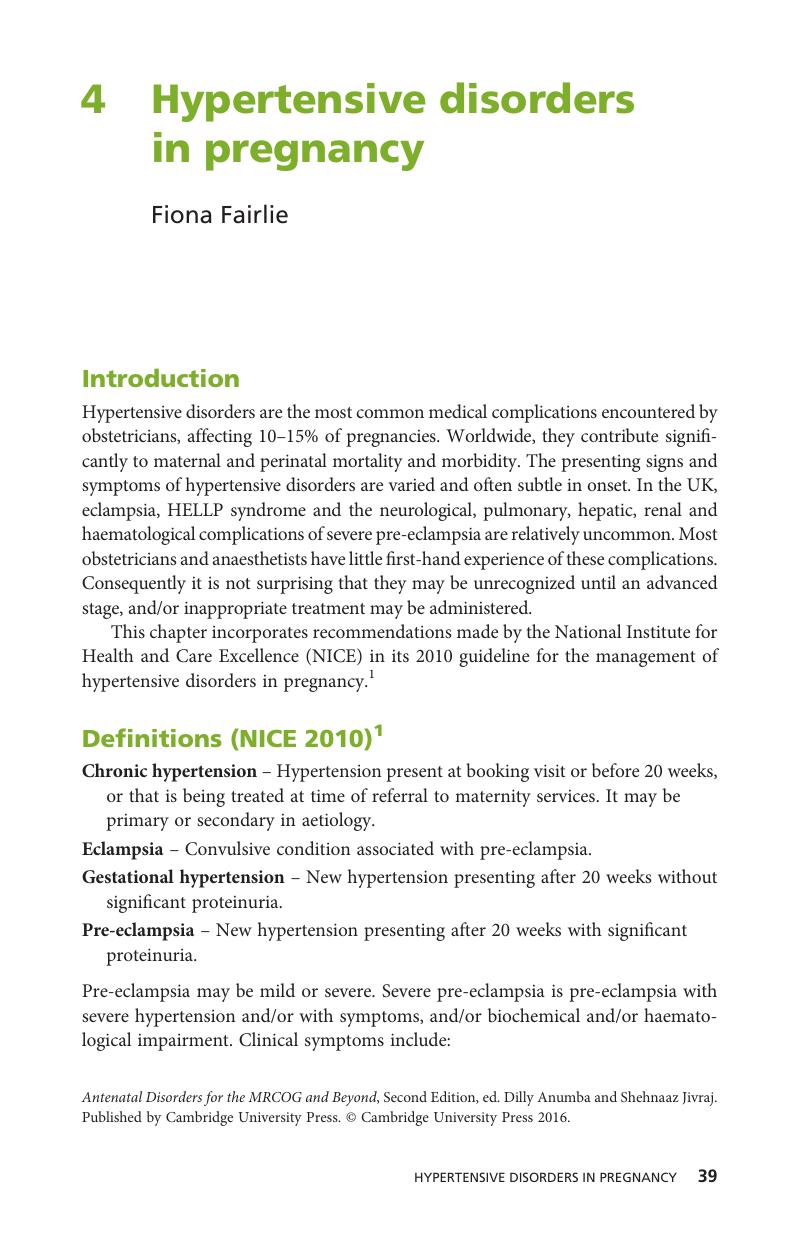Book contents
- Antenatal Disorders for the MRCOG and BeyondSecond Edition
- Antenatal Disorders for the MRCOG and Beyond
- Copyright page
- Contents
- Contributors
- Preface
- 1 Antenatal care and risk assessment
- 2 Antepartum haemorrhage
- 3 Multiple pregnancy
- 4 Hypertensive disorders in pregnancy
- 5 Prematurity
- 6 Previous caesarean section
- 7 Common medical disorders in pregnancy
- 8 Cardiac disease in pregnancy
- 9 Alloimmunization in pregnancy
- 10 Maternal mental health disorders
- 11 Drug and alcohol misuse in pregnancy
- 12 Screening for fetal anomalies
- Index
- Plate Section
- References
4 - Hypertensive disorders in pregnancy
Published online by Cambridge University Press: 05 July 2016
- Antenatal Disorders for the MRCOG and BeyondSecond Edition
- Antenatal Disorders for the MRCOG and Beyond
- Copyright page
- Contents
- Contributors
- Preface
- 1 Antenatal care and risk assessment
- 2 Antepartum haemorrhage
- 3 Multiple pregnancy
- 4 Hypertensive disorders in pregnancy
- 5 Prematurity
- 6 Previous caesarean section
- 7 Common medical disorders in pregnancy
- 8 Cardiac disease in pregnancy
- 9 Alloimmunization in pregnancy
- 10 Maternal mental health disorders
- 11 Drug and alcohol misuse in pregnancy
- 12 Screening for fetal anomalies
- Index
- Plate Section
- References
Summary

- Type
- Chapter
- Information
- Antenatal Disorders for the MRCOG and Beyond , pp. 39 - 62Publisher: Cambridge University PressPrint publication year: 2016



